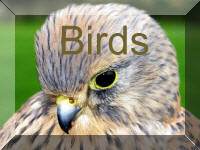Back To


Back To




The largest European heron. It can stand with neck stretched out, looking for food, or hunch down with its neck bent over its chest. In flight it holds its neck retracted and has large rounded wings. It is usually solitary although several birds may feed fairly close together. It stalks its food, often standing motionless for some considerable time. It usually feeds close to the bank or shore, but may wade out into shallow water.Where does it live?
Breeding
Breeds colonially in tall trees near to plentiful fish supplies. Woodland close to inland lakes, gravel pits and marshes, and also near to estuaries and coastal marshes, especially in Scotland. Scarcer in upland areas.
Wintering
Similar to breeding habitatsWhere to see it
Wetland marshes, gravel pits, reservoirs, lakes and rivers and estuaries, Usually seen standing silently at the water's edge, waiting for prey. Will come to gardens with ornamental fish ponds and fish farms.
What does it eat?
Mainly fish
What does it sound like
A loud 'fraank' call
.
When to see itAll year round.
Similar species
Crane